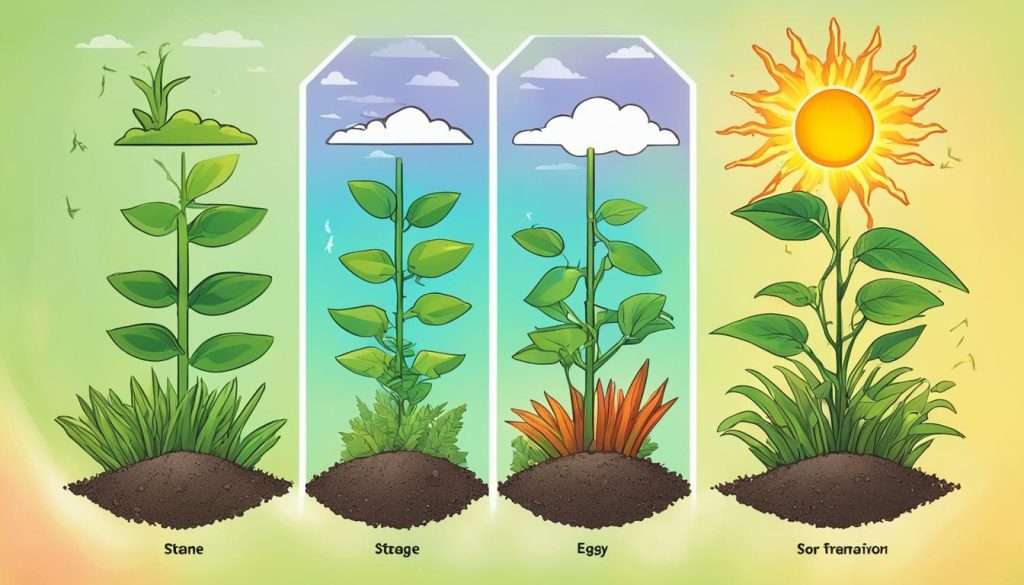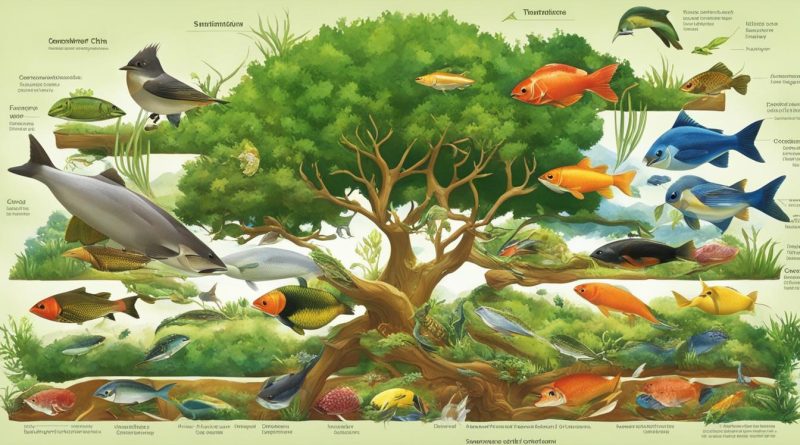Understanding Energy Transfers in Ecosystems
Energy is a fundamental force that drives the world around us. It is present in all living organisms and can take various forms, such as heat, light, and sound. In ecosystems, energy transfers occur constantly, as organisms consume and transform energy to maintain their survival and contribute to the wider balance of nature.
This section will provide an insight into the different types of energy transfer in living organisms, ecosystems, and physics. Energy transfer examples from nature and physics will be discussed to provide a comprehensive understanding of the different ways in which energy is transferred and transformed.
Key Takeaways
- Energy transfers are the movement of energy from one system to another.
- Energy transfers occur constantly in ecosystems and contribute to the overall balance of nature.
- There are various types of energy transfer, including conduction, convection, and radiation.
- Energy transfer examples from nature and physics provide a comprehensive understanding of the different ways in which energy is transferred and transformed.
- Understanding energy transfers in ecosystems is crucial for maintaining the balance of nature and sustaining life.
The Process of Energy Transfer
Energy transfer in an ecosystem occurs through different mechanisms that are crucial to the functioning of the ecosystem. These mechanisms include the transfer of energy through food chains and energy pyramids. The energy transfer process can also be categorized into different types.
Types of Energy Transfer
The different types of energy transfer include conduction, convection, and radiation. Conduction is the transfer of heat that occurs when two objects come into contact with each other. Convection occurs when a fluid is heated, and the heat is transferred from one place to another. Radiation happens when heat is transferred through electromagnetic waves such as light, infrared radiation, and X-rays.
Understanding the different types of energy transfer is essential in comprehending how energy flows through natural systems. For example, radiation energy transfer is vital in the transfer of energy from the sun to the earth.
The Role of Energy Transfer in Ecosystems
Energy transfer is vital in ecosystems as it provides the energy required for the maintenance of life processes. The sun is the primary source of energy for most ecosystems, and plants are the primary producers that convert this energy into a usable form through photosynthesis. The energy is then transferred from one organism to another through different mechanisms, such as the food chain and energy pyramids.
The image below shows an example of an energy pyramid in an ecosystem:

Energy transfer in ecosystems is a delicate balance, and any disruption in the transfer process can lead to catastrophic changes in the ecosystem. Human activities such as deforestation, pollution, and climate change have adversely affected the dynamics of energy transfer in ecosystems, leading to a significant impact on the biodiversity and functioning of ecosystems.
“Energy transfer in ecosystems is a crucial phenomenon that helps maintain the delicate balance of nature.”
The process of energy transfer is fascinating and complex, and a deeper understanding of energy transfer in ecosystems can provide insights into the functioning of our natural world.
Conclusion
The process of energy transfer is an essential aspect of life on Earth. It plays a significant role in the flow of energy through various ecosystems and ultimately contributes to sustaining life itself. Understanding how energy is transferred, transformed, and flows through living organisms can help us appreciate the complexity and interconnectedness of nature.
As discussed in the previous sections, energy transfers and transformations occur continuously within ecosystems, and any disturbance or disruption to this flow can have a significant impact on the delicate balance of nature. The intricate dynamics of energy transfer also highlight the importance of adopting sustainable practices and reducing our carbon footprint to minimize harm to the environment.
In conclusion, energy transfers, transformations, and flows are fundamental concepts that underpin ecological processes. It is crucial to understand and appreciate these processes to ensure the preservation and protection of our natural world for future generations.
FAQ
What are energy transfers?
Energy transfers refer to the movement of energy from one form to another. It involves the conversion or transformation of energy from one system or object to another.
Can you give some examples of energy transfers?
Sure! Some examples of energy transfers include the conversion of solar energy into chemical energy during photosynthesis, the transformation of electrical energy into light and heat energy in a light bulb, and the transfer of kinetic energy from a moving car to the surroundings via friction.
How do energy transfers occur in living organisms?
Energy transfers in living organisms occur through processes such as respiration and digestion. For instance, plants absorb sunlight and convert it into chemical energy through photosynthesis. When animals eat plants or consume other animals, they transfer this stored energy to their own bodies for growth, movement, and other biological processes.
What role do energy transfers play in ecosystems?
Energy transfers are vital for the functioning of ecosystems. They help to sustain life by providing the necessary energy for organisms to carry out their biological activities. Energy transfers also contribute to the flow of nutrients and materials within ecosystems, helping maintain a balanced ecological system.
What are the different types of energy transfer?
There are various types of energy transfer, including conduction, convection, and radiation. Conduction is the transfer of heat or energy through direct contact between objects or substances. Convection involves the transfer of heat or energy through the movement of fluids, such as air or water. Radiation, on the other hand, is the transfer of energy through electromagnetic waves, such as sunlight.
How can energy transfers be explained in physics?
In physics, energy transfers are explained using fundamental principles such as the laws of thermodynamics and conservation of energy. These principles help us understand how energy can change form or be transferred from one object to another, ultimately contributing to the overall balance and flow of energy in the universe.




